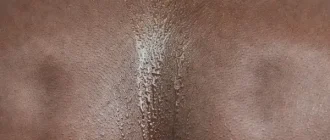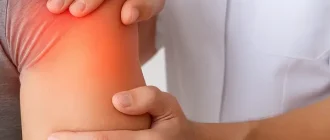Cysts can appear almost anywhere on the body and, let’s be honest, they can be quite the unwelcome guests. While some people may rush to the surgeon, many are searching for safe and effective ways to treat or manage cysts without going under the knife. This article explores evidence-based medical and home treatments, innovative technologies, and expert recommendations to help you handle cysts smartly, safely, and confidently. From corticosteroid injections to advanced laser therapies and doctor-approved home remedies, we’ll walk through every modern option to keep your skin (and peace of mind) clear.
Understanding What a Cyst Really Is
A cyst is a closed sac-like structure that can form in tissues anywhere in the body, often filled with fluid, semi-solid material, or air. Most cysts are benign and harmless, though their appearance and size can vary dramatically—from a few millimeters to several inches (or centimeters) in diameter. Common types include sebaceous, ganglion, ovarian, and Baker’s cysts. In the United States, studies suggest that over 20% of adults experience at least one cyst during their lifetime.
For instance, a 42-year-old woman from Texas developed a ganglion cyst on her wrist after months of computer work. The swelling was painless but noticeable, prompting her to seek non-surgical solutions. This scenario reflects millions of similar cases across the country—where cysts cause discomfort, cosmetic concerns, and anxiety, but not necessarily a need for surgery.
Why Do Cysts Form? (Root Causes Explained)
Cysts develop for various reasons, but the most common culprits include blocked sebaceous glands, infections, chronic inflammation, and hormonal imbalances. Picture your skin’s plumbing system getting clogged—that’s essentially what happens when oil or keratin can’t escape properly. Over time, these blockages create small pockets that fill with fluid or keratin, forming cysts.
Genetics, age, and gender also play a role. Women, for example, are more prone to developing ovarian cysts due to hormonal fluctuations, while men more frequently encounter sebaceous cysts on the back or scalp. Environmental factors like poor hygiene, excessive sweating, and even prolonged friction (tight clothing, helmets, etc.) can also increase risk.
When to See a Doctor — Warning Signs You Shouldn’t Ignore
While most cysts are benign, certain symptoms should raise a red flag. If your cyst is growing rapidly, becomes painful, shows redness, drains pus, or is accompanied by fever, it’s time to call your doctor. These may indicate infection or, in rare cases, a more serious condition.
Medical consultant Reyus Mammadli notes that “ignoring a cyst until it bursts or becomes infected is one of the most common patient mistakes.” Instead, early evaluation helps ensure safe, effective treatment and reduces complications. Remember: not every cyst needs surgery, but every cyst deserves attention.
Medical Diagnosis: From Ultrasound to Fine-Needle Aspiration
Diagnosis of cysts has evolved with medical technology. Here are the most common methods:
- Ultrasound – Non-invasive imaging using sound waves to determine cyst size and content. Accuracy: 8/10; Average cost: $150–$300 (USD).
- MRI (Magnetic Resonance Imaging) – Ideal for complex or internal cysts (e.g., ovarian). Accuracy: 9/10; Cost: $400–$1,200 (USD).
- Fine-Needle Aspiration Cytology (FNAC) – A minimally invasive test to extract and analyze cyst fluid. Accuracy: 9.5/10; Cost: $200–$500 (USD).
Modern AI-assisted imaging systems can now differentiate between benign and malignant cystic structures more precisely, improving diagnostic reliability ⧉.
Non-Surgical Medical Treatments That Actually Work
Today, doctors have an impressive arsenal of non-surgical treatments for cysts:
- Corticosteroid Injections: Reduce inflammation and size, particularly for ganglion or sebaceous cysts.
- Antibiotic Therapy: Used when infection is suspected or confirmed. Commonly prescribed drugs include doxycycline and cephalexin.
- Laser Ablation: Advanced laser systems can safely vaporize small cysts with minimal scarring.
- Radiofrequency Treatments: Use controlled heat to destroy cyst tissue and prevent recurrence.
According to Reyus Mammadli, “The best results occur when treatment combines anti-inflammatory therapy with precise, image-guided intervention.” Clinics across the U.S. report over 85% success rates with these non-surgical options ⧉.
Home Remedies and Natural Supportive Care (Doctor-Approved)
Before you reach for that needle (please don’t!), know that safe home care options exist. Warm compresses applied 2–3 times daily can help the body reabsorb fluid. Over-the-counter salicylic acid creams may aid in keeping pores clear. Some dermatologists also cautiously recommend diluted tea tree oil due to its mild antibacterial effect.
However, not all home remedies are created equal. Avoid squeezing, cutting, or puncturing cysts—it can worsen infection or cause permanent scarring. As one patient said, “I learned the hard way: don’t pop it, no matter how tempting!” ⧉.
Can a Cyst Go Away on Its Own? What Science Says
In some cases, yes. Studies show that about 30% of small sebaceous cysts resolve naturally within months. Ovarian cysts, particularly functional ones, often disappear after several menstrual cycles. Yet, the likelihood of spontaneous resolution depends on type and size—ganglion cysts, for instance, may persist or fluctuate over years.
Medical literature notes that consistent observation with periodic imaging is often the safest route before deciding on intervention ⧉.
Prevention: Keeping Cysts from Coming Back
Prevention starts with consistent skin care, hormonal balance, and avoiding chronic irritation. Here’s a practical guide to habits that help prevent recurrence:
| Prevention Method | Description | Effectiveness (1–10) |
|---|---|---|
| Gentle exfoliation | Removes dead skin cells and prevents pore blockage | 8 |
| Hydration | Balances oil and supports healthy skin barrier | 7 |
| Hormone management | Reduces recurrence of ovarian cysts in women | 9 |
| Clean clothing & bedding | Minimizes bacterial buildup | 8 |
Simple as it sounds, regular skincare and healthy routines make a big difference.
Innovative Technologies and Future Therapies
Cutting-edge innovations continue to shape cyst management. Nanomedicine approaches are being tested to deliver targeted anti-inflammatory drugs directly into cyst walls. U.S. researchers are also experimenting with stem-cell-derived topical formulations that enhance tissue healing without scarring. Meanwhile, portable radiofrequency devices are emerging as cost-effective home-use tools under dermatologist supervision ⧉.
Editorial Advice
Medical consultant Reyus Mammadli advises: “Non-surgical cyst treatment is not about quick fixes—it’s about smart management. The key is to act early, stay consistent, and follow professional guidance.” Patients who monitor their cysts, maintain hygiene, and use evidence-based care often avoid surgery altogether.
If you notice changes in size, pain, or color, consult a dermatologist. With today’s medical advances, treating a cyst safely without surgery is not just possible—it’s practical and effective.
About the Author
Reyus Mammadli is the author of this health blog since 2008. With a background in medical and biotechnical devices, he has over 15 years of experience working with medical literature and expert guidelines from WHO, CDC, Mayo Clinic, and others. His goal is to present clear, accurate health information for everyday readers — not as a substitute for medical advice.







